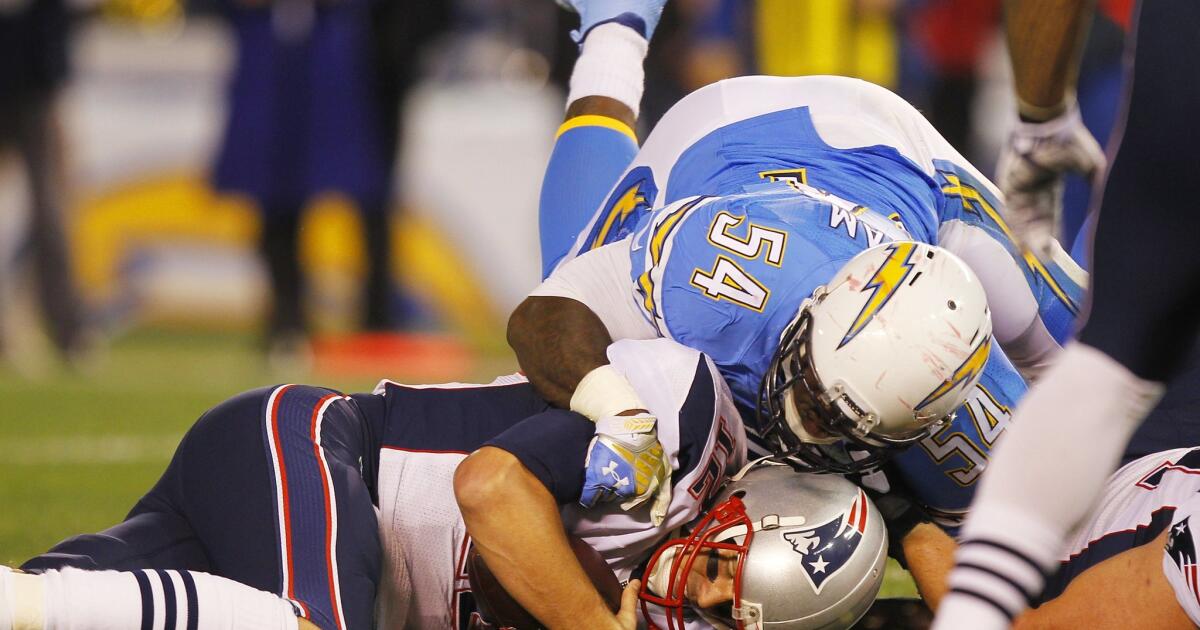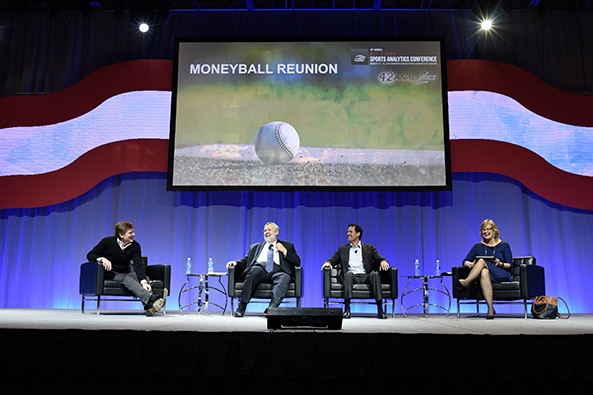Nutrition and a healthier lifestyle are also an important part of combating injuries. The best recent example is our very own Melvin Ingram, who has not missed a game since 2014.
Melvin Ingram went to Miami this offseason.
Somebody new returned.
The new man swears off beef and pork and doesn't touch bread, potatoes or pasta. He guzzles water between a fish- and chicken-centered intake that involves fruit, vegetables and rice. For breakfast, he scarfs down egg whites. On some days, it's oatmeal.
His athletic trainer in Miami paired regimen with a revamped diet.
Asked the results, the new man cracks an old smile.
"Voila," Ingram said.
The Chargers outside linebacker weighed 266 pounds last season. Ingram 2.0 is 20 pounds lighter, down to 246 with 8 percent body fat. The lighter and leaner version is gravitating toward a larger leadership role. He'll be on the field Tuesday for the start of organized team activities (OTAs).
Somebody new returned.
The new man swears off beef and pork and doesn't touch bread, potatoes or pasta. He guzzles water between a fish- and chicken-centered intake that involves fruit, vegetables and rice. For breakfast, he scarfs down egg whites. On some days, it's oatmeal.
His athletic trainer in Miami paired regimen with a revamped diet.
Asked the results, the new man cracks an old smile.
"Voila," Ingram said.
The Chargers outside linebacker weighed 266 pounds last season. Ingram 2.0 is 20 pounds lighter, down to 246 with 8 percent body fat. The lighter and leaner version is gravitating toward a larger leadership role. He'll be on the field Tuesday for the start of organized team activities (OTAs).
The 26-year-old says he lost weight not because of external pressure from the Chargers or otherwise. He did it because it was something he wanted after missing 19 games the past two years, including seven in 2014 from a hip injury.
He is two years removed from a torn anterior cruciate ligament.
"Being at 260 or 265, 266, wasn't working, really," Ingram said. "I felt quick but I kept getting injured. You've got to nitpick at your own body, your own self, your own game. ... I felt like playing lighter would be a better thing for me. The lighter you are, the less stress it is on your body, the less stress it is on your knees, your hips, your joints or your ankles, your toes -- everything."
So, he went to Miami.
He met with David Alexander, owner of DBC Fitness, and expressed desire to become bigger, faster and more powerful. It sounded simple; Alexander could do that. The trick was Ingram wanted to lose 20 pounds in the process.
Their work began.
They trained twice a day, a weightlifting session in the morning and a more cardio-, plyometric-based afternoon workout, often including boxing. The two-a-days were done six days a week, Sunday the established rest day.
But that wouldn't be enough.
To build Ingram's body, they had to break it down.
Alexander found him to be dehydrated and prescribed a gallon of water a day. His diet was all wrong, eating foods that were either too processed or containing too much flour. His digestive system was overworked; red meat was scrapped in favor of more easily digestible proteins.
Sleep was important, too.
At least eight hours a night.
Alexander likened Ingram's discipline to a robot. As body fat decreased, Ingram gained strength because his muscles were working more efficiently, he said.
"As quick as two or three days, he noticed his energy levels go way up," Alexander said in a Monday phone interview. "He became obsessed with the process."
He is two years removed from a torn anterior cruciate ligament.
"Being at 260 or 265, 266, wasn't working, really," Ingram said. "I felt quick but I kept getting injured. You've got to nitpick at your own body, your own self, your own game. ... I felt like playing lighter would be a better thing for me. The lighter you are, the less stress it is on your body, the less stress it is on your knees, your hips, your joints or your ankles, your toes -- everything."
So, he went to Miami.
He met with David Alexander, owner of DBC Fitness, and expressed desire to become bigger, faster and more powerful. It sounded simple; Alexander could do that. The trick was Ingram wanted to lose 20 pounds in the process.
Their work began.
They trained twice a day, a weightlifting session in the morning and a more cardio-, plyometric-based afternoon workout, often including boxing. The two-a-days were done six days a week, Sunday the established rest day.
But that wouldn't be enough.
To build Ingram's body, they had to break it down.
Alexander found him to be dehydrated and prescribed a gallon of water a day. His diet was all wrong, eating foods that were either too processed or containing too much flour. His digestive system was overworked; red meat was scrapped in favor of more easily digestible proteins.
Sleep was important, too.
At least eight hours a night.
Alexander likened Ingram's discipline to a robot. As body fat decreased, Ingram gained strength because his muscles were working more efficiently, he said.
"As quick as two or three days, he noticed his energy levels go way up," Alexander said in a Monday phone interview. "He became obsessed with the process."








Comment